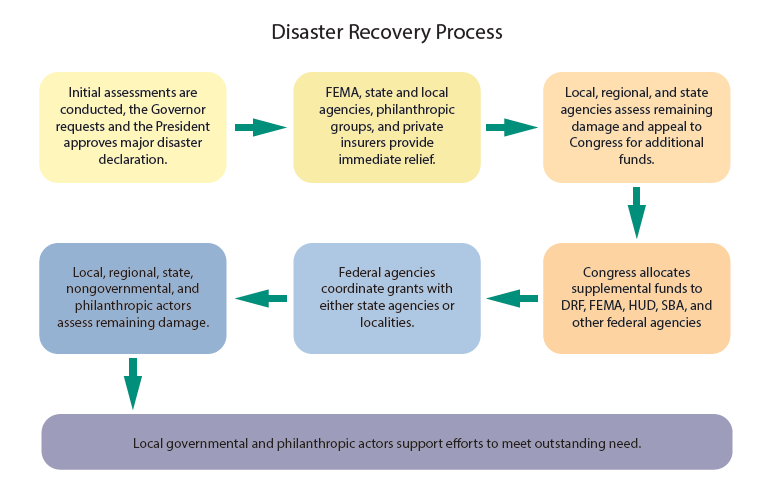The process of recovering from Hurricane Harvey is going to be long and costly. As my colleague covered on the Urban Edge a few weeks ago, there are numerous channels for recovery funding and settling on how much aid the region will receive is a politically arduous process in its own right.
The complicated nature of recovery funding makes it difficult for officials, much less residents, to understand how the process will play out. Aiming to inform these groups about the way recovery will unfold, the Kinder Institute and the Harte Research Institute for Gulf of Mexico Studies at Texas A&M Corpus Christi have jointly produced a disaster response and recovery financial primer.
The primer simplifies the picture of the disaster funding process by breaking down what funding possibilities exist at the federal, state and local level. It also shows how the funding from each of those levels moves to the others before ultimately being spent on recovery.
The federal government plays the largest role in funding disaster recovery mainly through the Federal Emergency Management Agency, the Small Business Administration’s disaster loan program, and through the Housing and Urban Development Department’s community development block grant disaster relief program. The primer lays out how each of these programs work and how local recovery efforts interact with them.
But the federal government is not the sole provider of recovery funds. Both the state and local entities have the capability to allocate funds for recovery. And philanthropic dollars also play a key role in filling gaps left before and after public money is assigned.
Finally, the primer highlights the risks that recovery might miss some of the Houston region’s most vulnerable populations. Much of the funding that will come from the federal government requires registration and the ability to navigate the often byzantine bureaucratic process of recovery assistance.
In many cases lower-income groups, the elderly and people with disabilities are underrepresented in officials registrations because they lack the time or resources needed to navigate the system. For groups like the undocumented, many avenues of aid are simply closed. Identifying these vulnerable groups and ensuring that all impacted residents are receiving aid will be one of the ongoing challenges of recovery.
The financial primer provides a blueprint for our region to understand the way the recovery process will play out and demystifies the avenues through which funding will flow. By providing this clarity our region can begin to shift the focus from how we pay for recovery to how we want to recover.




